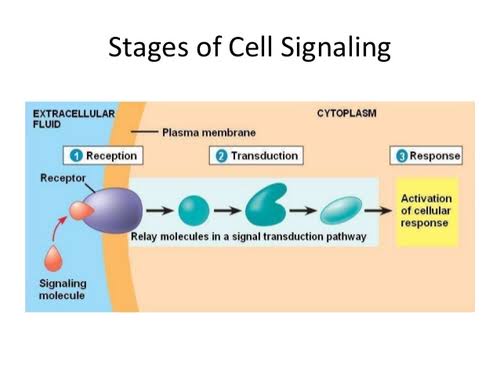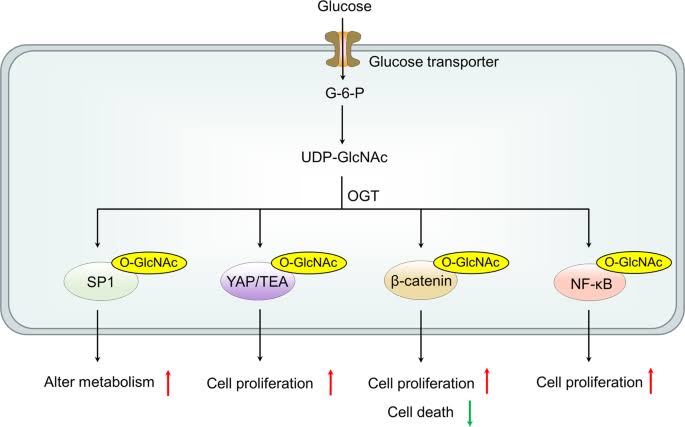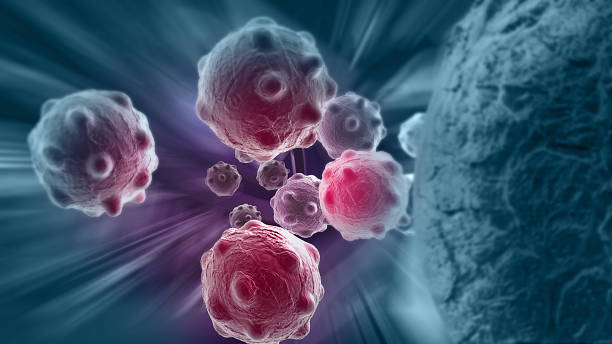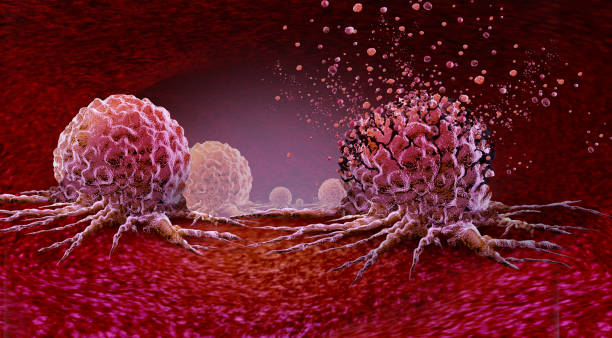In the intricate world of cellular biology, communication is key. Imagine your body as a bustling city where billions of messages are exchanged every second to ensure smooth operation. These messages regulate critical processes such as immune responses, muscle function, and the operation of organs. They also control how cells grow, divide, and undergo programmed death, a process known as apoptosis. However, when these cellular messages become disrupted or misdirected, the consequences can be severe, often leading to conditions like cancer. Disruptions in these signals can arise from mutations in signaling proteins, overactive signaling components, or other alterations that interfere with normal cell behavior. Understanding how these disruptions occur and their role in cancer is crucial for developing therapies that restore normal cell function.

The Basics of Cell Signaling: How Cells Communicate
Cell signaling can be compared to the communication networks within a city, where signals are transmitted between various parts of a cell or from one cell to another to coordinate vital processes. This process usually begins with the binding of a signaling molecule or ligand (like a hormone) to a receptor on the cell’s surface. Think of this as a key fitting into a lock, triggering a cascade of events within the cell that result in specific responses, such as cell growth, repair, or programmed cell death (apoptosis).
Types of Cell Signaling:
- Autocrine Signaling: Cells signal to themselves, much like a person talking to themselves, playing a crucial role in growth and development.
- Paracrine Signaling: Similar to neighbors chatting over a fence, cells communicate with nearby cells, which is important for tissue development and immune responses.
- Endocrine Signaling: Hormones act like letters sent across town, traveling through the bloodstream to distant target cells, essential for maintaining bodily balance.
- Juxtacrine Signaling: Think of a handshake—cells communicate through direct contact with neighboring cells. This is essential for immune responses and cell differentiation.
Key Components of Cell Signaling
Just as a city’s communication system has essential components like phones, internet connections, and servers, cell signaling involves several key elements:
- Receptors: These function like the city’s communication hubs, receiving signals such as growth factors, hormones, and cytokines, and triggering cellular responses.
- Signaling Molecules: Once a signal is received, it’s relayed by signaling molecules, including proteins like kinases, phosphatases, and transcription factors, ensuring the message reaches its destination within the cell.
- Signaling Pathways: These are the highways that signals travel on, guiding them from the cell surface to the nucleus, where critical decisions about cell behavior are made.
- Cellular Response: The outcome, such as growth, division, or apoptosis, is based on the signal received.

Cell signaling and Cancer
Aberrations in signaling pathways frequently underlie the initiation and progression of cancer. When the cellular communication system malfunctions, it can lead to serious conditions like cancer. In cancer, the signaling pathways that normally control cell growth and death go haywire.
Key pathways commonly altered in cancer:
•Receptor Tyrosine Kinases (RTKs) and MAPK/ERK Pathway:
This pathway regulates cell growth, proliferation, and survival. Mutations in this pathway can cause cells to grow uncontrollably, akin to a car with a stuck accelerator, leading to tumor formation.
•PI3K/AKT/mTOR Pathway:
This pathway helps cells survive and grow. When it’s overactive, like a power surge, it can prevent cells from dying when they should, contributing to cancer development.
•Wnt/β-Catenin Pathway:
Usually involved in controlling cell fate, disruptions here can lead to cells growing without limits, as seen in some colon cancers.
•Hedgehog Pathway:
Normally quiet in adults, this pathway can be reactivated, leading to cancers like basal cell carcinoma.
•Notch Pathway:
Important for cell differentiation, its malfunction can cause cells to keep multiplying instead of maturing, as seen in certain leukemias.
•JAK/STAT Pathway:
This pathway influences cell proliferation and survival. Constitutive activation of the pathway is associated with several hematologic malignancies, such as myeloproliferative disorders and certain types of lymphoma.
Mechanisms of Signaling Dysregulation in Cancer
Cell signaling disruptions can occur through various mechanisms, leading to cancer. Common mechanisms include:
- Mutations in Receptors and Signaling Proteins:
Genetic mutations in key proteins, like EGFR in lung cancer, can lead to receptors that are always “on,” driving uncontrolled cell division. Similarly, mutations in RAS proteins can keep them active, continuously promoting cell growth, a common feature in pancreatic, colorectal, and lung cancers.
- Overexpression or Amplification of Signaling Components:
In certain cancers, proteins like HER2 are overexpressed, resulting in hyperactivation of signaling pathways, and driving aggressive tumor growth.
- Disruption of Tumor Suppressor Pathways:
Loss of tumor suppressors like PTEN can lead to unchecked signaling and cell proliferation, a feature in cancers like glioblastoma and prostate cancer.
- Constitutive Activation of Signaling Pathways:
Permanent activation of pathways like PI3K/AKT/mTOR drives continuous cell proliferation, contributing to cancer.
- Disruption of Cell Cycle Control:
Cell signaling pathways are closely linked to the regulation of the cell cycle. Overexpression of Cyclin D1, a key regulator of the cell cycle, disrupts cell cycle regulation, leading to uncontrolled division, which is common in cancers like breast cancer.

Therapeutic Implications: Cell Signaling and Cancer Therapy
Understanding these pathways has led to the development of targeted therapies, which act like specialized repair crews fixing specific broken signals in our city. These therapies include:
Targeted Therapies:
These drugs specifically block the overactive signaling pathway present in cancer cells.
Tyrosine Kinase Inhibitors (TKIs):
Drugs like imatinib (BCR-ABL), erlotinib (EGFR), and lapatinib (HER2) target specific kinases.
Monoclonal Antibodies:
Antibodies such as trastuzumab (HER2) and cetuximab (EGFR) bind to extracellular domains of receptors, blocking ligand binding.
Pathway Inhibitors:
These small molecules interfere with the pathways that drive cancer growth:
•MEK Inhibitors: Trametinib and cobimetinib target MEK1/2 in the RAS/MAPK pathway. They are used in the treatment of advanced melanoma.
•PI3K Inhibitors: Alpelisib targets PI3Kα in PIK3CA-mutant cancers. It is used in advanced breast cancer with PIK3CA mutation.
•mTOR Inhibitors: Everolimus and temsirolimus inhibit mTOR activity. They are used in the treatment of advanced renal cell carcinoma.
Combination Therapies: Combination therapies involving signal pathway inhibitors are a promising approach in cancer treatment. These therapies aim to target multiple pathways simultaneously, enhancing treatment efficacy and overcoming resistance.
Challenges and Future Directions
While targeting cell signaling has revolutionized cancer treatment, challenges remain:
- Tumor Diversity: Each cancer is different, making it hard to find one-size-fits-all treatments. Personalized medicine aims to tailor treatments based on the specific signaling errors in each patient’s cancer.
- Resistance: Cancer cells can sometimes find detours around blocked pathways, leading to resistance. Researchers are working on ways to predict and prevent this.
- Side Effects: Because signaling pathways are also important in healthy cells, treatments can sometimes cause unwanted side effects. Finding more precise ways to target cancer cells while sparing healthy ones is a key focus.
- New Technologies: Advances in science are helping researchers better understand and target these complex signaling networks.
Conclusion: Fixing Broken Signals in Cancer
Cell signaling is fundamental to cellular function, and its disruption is central to cancer. By understanding and fixing these broken signals, scientists are developing more effective, targeted treatments that offer hope for better outcomes and, ultimately, a cure. As research continues, the future of cancer therapy looks brighter, with more personalized and precise approaches on the horizon.
Further Readings
Downward, J. (2003).Targeting RAS signaling pathways in cancer therapy.
Vogelstein, B., & Kinzler, K. W. (2004).Cancer genes and the pathways they control.
Sanchez-Vega, F., et al. (2018). Oncogenic Signaling Pathways in The Cancer Genome Atlas.
Hanahan, D., & Weinberg, R. A. (2011). Hallmarks of Cancer: The Next Generation.
Weinberg, R.A. (2013). The Biology of Cancer. Garland Science.



